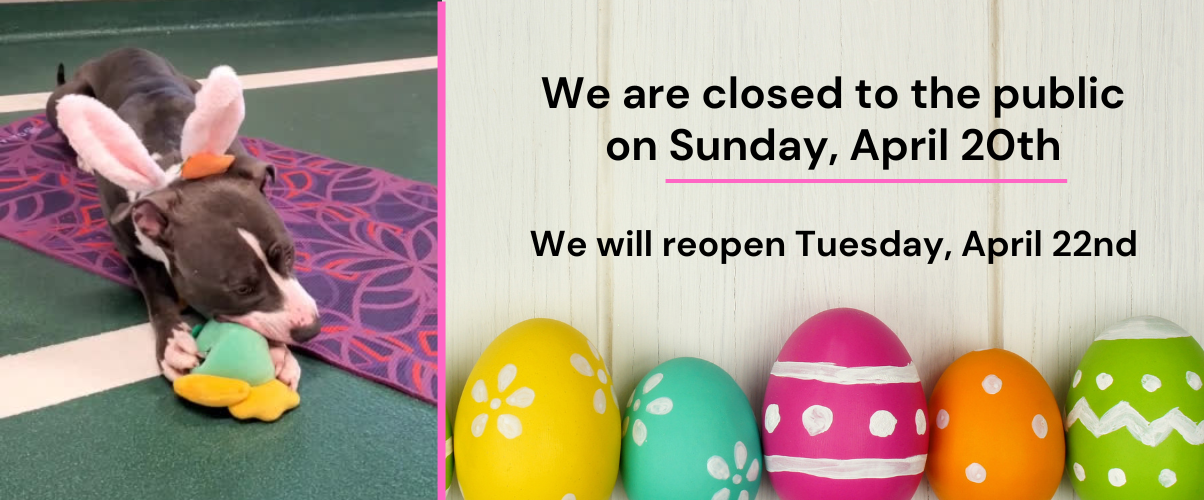
You are off to a good start if the dogs met already at our shelter, but before you go inside, take a short walk with your dogs (NOT TO THE DOG PARK THOUGH!) to help reduce stress. Arguments often occur when entering territory, going through doors or gates, in tight spaces, around food, toys, beds, games and over your attention. Fights can be avoided by giving the dogs time and space to get to know each other calmly. Keep the leash on the new dog and control his movements. Do not give either dog attention until both are quiet and well behaved. It can help to increase praise to your current dog whenever the new dog approaches.
Important! Do not feed the dogs next to each other. Refrain from giving either dog a bone or long-lasting food treat, as this can easily lead to fighting. Wait until they are accustomed to each other (a few weeks). Remember that food guarding is a normal dog behavior and there are some dogs that may never be able to eat together.
If you are worried at any point, pick up the leash and walk the new dog away. It may help to spray the dogs with water if they start to fight. Do not grab either dog, as you may get bitten by mistake.
Avoid playing high arousal games with the dogs. Tug-of-War or a fast game of fetch may cause a fight to break out as they are both energized. Do not expect the dogs to share the same bed. It may be wise to crate your new dog until a relationship is established and you know she is potty trained. Eventually it would be ideal to have both dogs, with a dog bed each, sleeping in the same room (your bedroom, as they love to be near you). Separate the dogs when you are not home until they have proven that they can get along.
Be prepared before the dog comes home. Make sure the dog does not have access to the cat’s food and water and especially the litter box! Bring your new dog into the house on a leash. If they both seem calm, allow them to sniff each other and then distract the dog with a treat or praise. After a few meetings, if all has gone well, you can drop the end of the leash and let him drag the leash around the house so you can grab it if necessary. It is normal for the cat to hiss and growl at first, especially if she has not lived with a dog before. Cats take time to adjust to changes. Never allow the dog to chase the cat, even in play, as this situation can easily get out of control and become habit.
If the initial interaction isn’t good then keep a distance between them to allow time for adjustment. Distract the dog with treats and reward calm behavior. You can try spraying them with water if they start to fight, or throw a towel over the cat if he attacks the dog. Make sure the cat has an escape route or can leap to a high place. Do not let the dog chase or corner the cat or vice versa. Separate them when you are not there to supervise until you all are comfortable with the situation.
If your cat hides, don’t worry. Make sure the cat has a private place (not accessible to the dog) where she can eat and drink in peace and feel safe. Insure that the cat has access to her litter box, but that the dog does not. Allow the pets to adjust in their own time - be patient and act calm and relaxed. Often they become friends, but sometimes they just tolerate each other. Either way you should respect the arrangement.